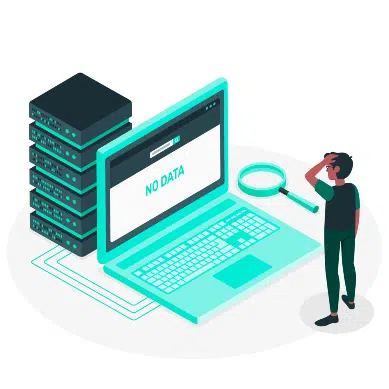Breaches have never been more expensive. Don’t believe us? See for yourself.
The average data breach cost was US$4.24 million in 2021, up from $3.86 million in 2020 — a new all-time high in the report’s history. Similarly, the average enterprise cost of cybersecurity grew by 22.7% in 2021.
It’s become a business imperative to protect sensitive systems and data. Risk management aims to secure IT assets, but companies will spread themselves too thin if they try to stop every risk they face.
Instead, cyber risk quantification helps organizations understand the financial impact of risks and tactfully allocate resources to mitigate expensive and likely scenarios.
Generally speaking, risk management has been around for decades. But risk quantification and prioritization have historically been left up to educated guesses. Fortunately, there is now a wealth of data, techniques, and tools available for organizations to objectively analyze risks and maximize the impact of their IT budgets.
Risk quantification techniques have rapidly evolved in recent years, and businesses of all sizes should leverage these techniques to fully understand the financial impact of the risks they face. Read on to learn more about quantifying risks and how it can enhance your entire risk management program.

What is Risk Quantification?
Risk quantification is a relatively new component of risk management that aims to understand the financial impact of a given scenario.
Understanding the costs of risks facing your company helps IT leaders make data-driven decisions about which risks take priority and how much of the budget is worth spending to mitigate those risks. For example, if the financial impact of a risk is $100,000, it’s not worth spending $150,000 to mitigate it.
Risk prioritization is the practice of determining which threats should be addressed first and how IT resources should be allocated. Companies have prioritized risks for decades, but now, risk quantification plays a vital role in the process by understanding each risk’s financial costs.
The Dangers of Risk Prioritization Without Quantification
You can certainly prioritize risks without quantification, but you’ll be working off the best guesses of your IT staff. While their input and experience is valuable, you can now supplement their insights with global data and risk quantification models.
It’s difficult to accurately prioritize risks if you don’t know their financial impact. For example, one of the core purposes of risk management is to save money by preventing breaches, but if you don’t know what that breach will cost, you won’t be making data-driven mitigation decisions.
Additionally, you may end up spending more on mitigating controls than the real-world cost of the risk.
Popular Risk Quantification Methods
Cyber risk quantification models aim to understand the financial impact of the given risk. Each method takes a different approach, and you may discover that there isn’t a ‘one size fits all’ solution. Instead, you may want to use different methods for different risks.
Some of the most popular approaches include:
- Fault Tree Analysis: This method creates a structured diagram that helps identify specific elements that can cause a system failure or enable a breach. You can then hone in on the exact mitigation controls and determine costs.
- Sensitivity Analysis: What risks have the most severe impact on a given project or system? Sensitivity analysis examines the entire project to find which components can cause a system failure.
- Three Point Analysis: Most risks don’t have one outcome but several possibilities. Three point analysis identifies three possibilities: optimistic, most likely, and pessimistic. From there, you can arrive at the best estimate of the risk’s impact.
- Decision Tree Analysis: You may have heard of decision trees elsewhere, and the core concept applies to risk quantification. These trees help you understand the implications of choosing one option over another. In addition, you can use these trees to navigate the different mitigating controls and their costs.
- Expected Monetary Value (EMV): EMV is used to quantify and compare several risks in a given project or system. The technique also helps you determine your contingency reserve and how much of the budget should be on standby should the risk occur.
- Monte Carlo Analysis: One of the most popular techniques is the Monte Carlo Analysis, similar to the Three Point Analysis. It uses optimistic, most likely, and pessimistic estimates. But Monte Carlo goes a step further and considers the cost and completion dates of projects (mitigation controls).
Which one is right for you? For most businesses, it depends on the risk in question. For example, risks with more variables affecting their financial impact will benefit from Monte Carlo Analysis, whereas more straightforward risks can use sensitivity analysis.
Start Getting Value With
Centraleyes for Free
See for yourself how the Centraleyes platform exceeds anything an old GRC
system does and eliminates the need for manual processes and spreadsheets
to give you immediate value and run a full risk assessment in less than 30 days
Top Benefits of Accurate Risk Quantification
You can see that risk quantification adds time and complexity to the risk assessment process, so is it really worth it?
Risk management focuses on mitigating costly threats to prevent incurring the immediate cost and lasting reputation damage of breaches. But if you don’t know the cost of a given threat, how will you know which ones are worth your limited budget?
It’s well worth investing the time and effort in risk quantification. And fortunately, new tools exist that minimize both time and complexity, such as risk registers and financial impact calculators.
Some of the key business benefits of risk quantification are:
- Enhanced decision-making: Data-driven decisions have become the gold standard for most business units, and risk management should not be the exception. Risk quantification allows decision makers to make more tactful choices about which risks need attention by arming them with a wealth of data.
- Objective assessment: Risk quantification assigns real dollar amounts to specific risks. Therefore, quantification prevents involved parties from valuing the same risk differently. It’s then easier for IT leaders and executives to agree on what should take priority.
- Maximize IT budgets: You don’t have unlimited resources but might have near-unlimited risks. Risk quantification helps make the most of your IT budgets by targeting high-impact threats rather than spreading resources too thin.
- Executive buy-in: Executives want to know both how much risk mitigation controls will cost and how much money those controls will save. Without risk quantification, you only have half of the equation, which makes it more difficult for executives to sign off on costly projects.
Risk Quantification is Only One Piece of the Puzzle
Even though we’ve honed in on risk quantification, it’s only one aspect of risk management. Risk management involves frequent risk assessments, and every assessment should involve quantification.
Where does quantification fit in the assessment process? Generally, it follows risk identification and precedes risk prioritization.
Integrating quantification with your overall risk assessment process might cause some growing pains, but it will improve the accuracy and effectiveness of your entire risk management program.
Streamline Risk Quantification With the Right GRC Platform
Risk quantification can have a profound effect on your risk management program. Yet, putting a price tag on risks is challenging, especially when attempted manually. Fortunately, you don’t need to find all the data and crunch the numbers yourself anymore.
Now, third-party GRC tools improve the process with an automated risk register and financial impact calculator. Both of these tools significantly simplify risk quantification while improving the accuracy of results.
Centraleyes’ cloud-based GRC platform includes both an automated risk register and a financial impact calculator designed to complement your entire risk management program. Are you ready to enhance your risk assessments with potent quantification tools? Watch our demo or talk to a risk management expert today to learn more.
Start Getting Value With
Centraleyes for Free
See for yourself how the Centraleyes platform exceeds anything an old GRC
system does and eliminates the need for manual processes and spreadsheets
to give you immediate value and run a full risk assessment in less than 30 days





